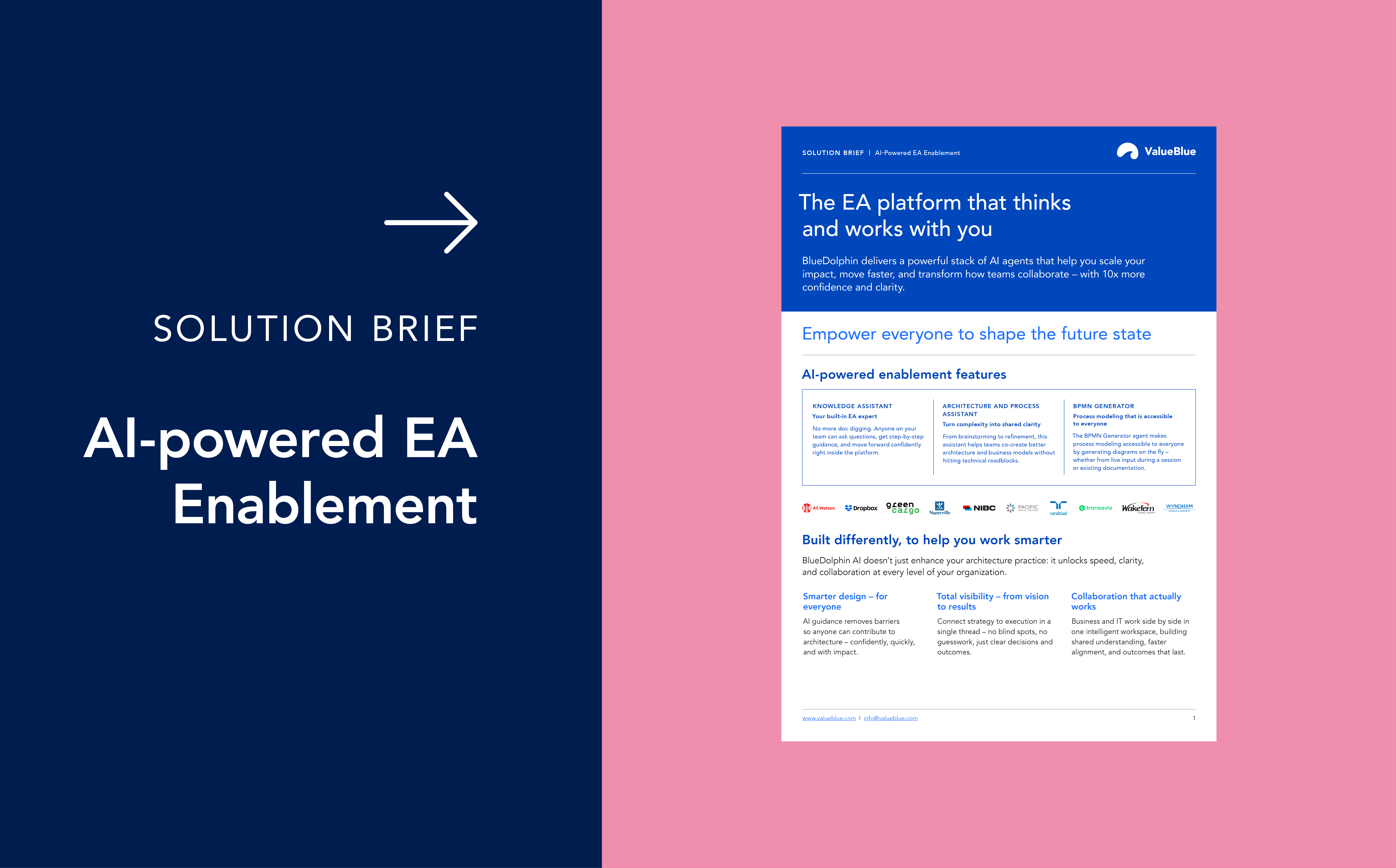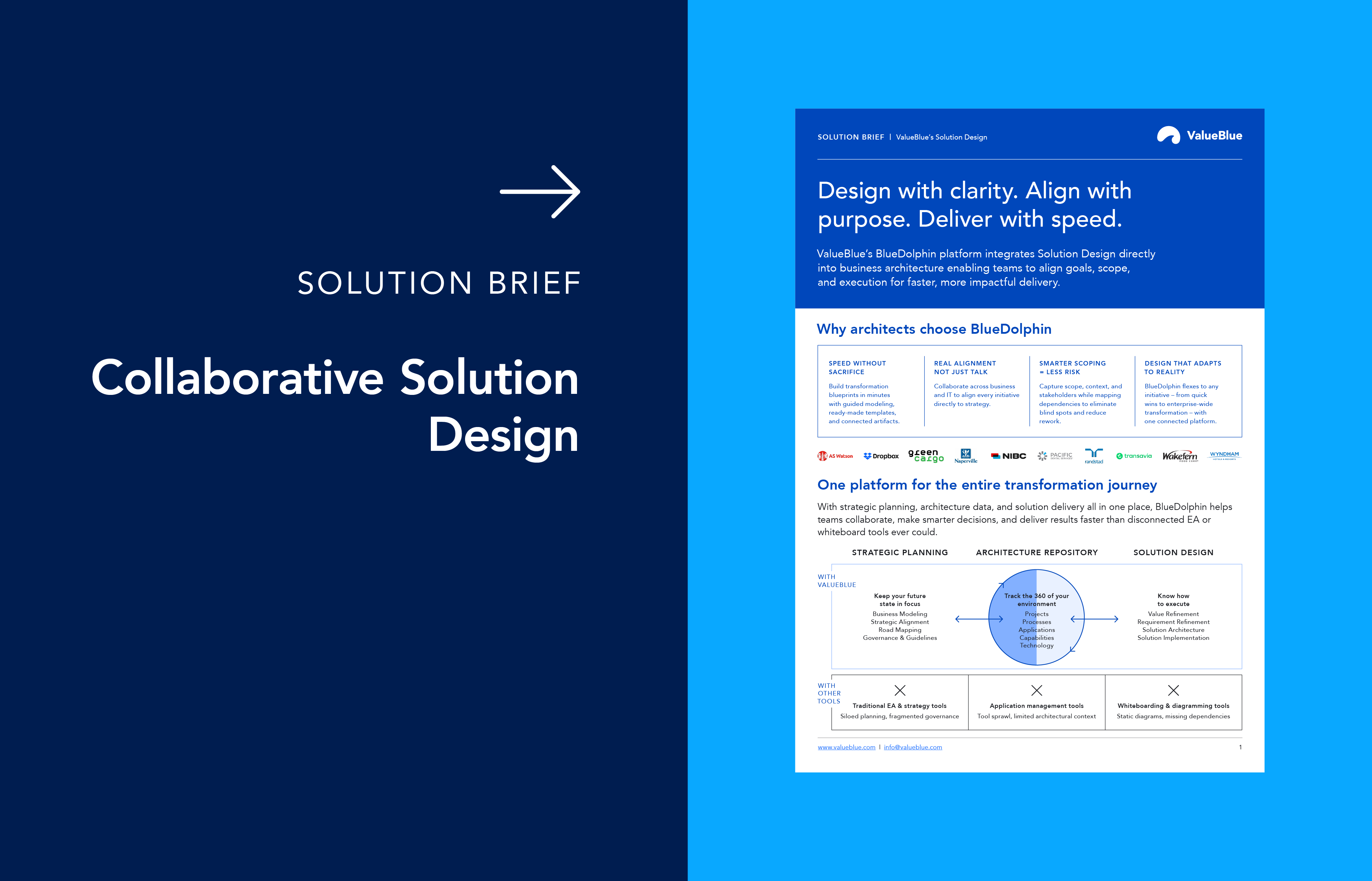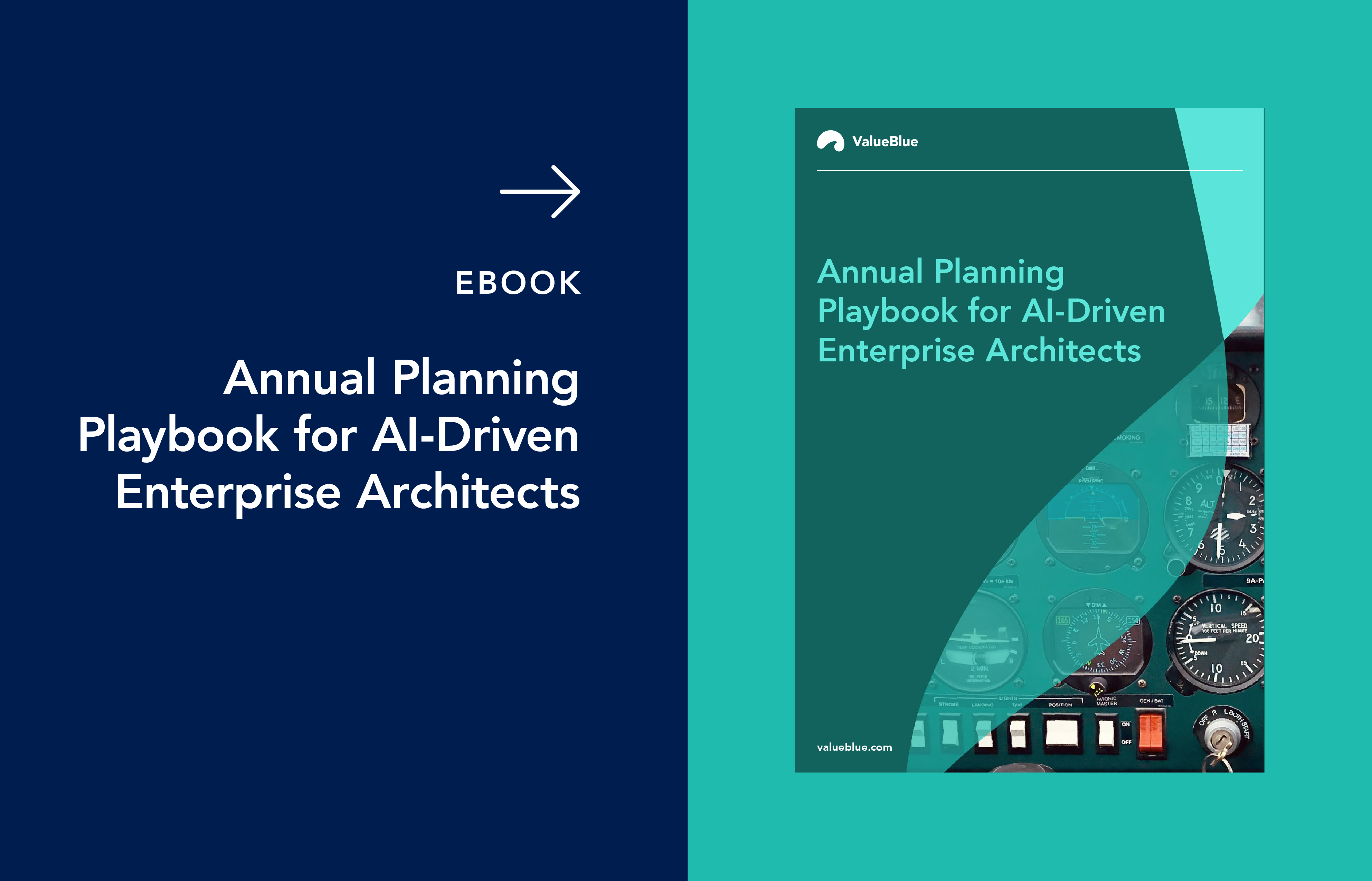Enterprise Architecture & Business Process Management: A Perfect Match
Transformation success depends on seamless integration between strategy, processes, and technology. Business Process Management (BPM) and Enterprise Architecture (EA) are at the heart of this integration. Together, these methodologies enable organizations to improve operational efficiency, reach strategic goals, and drive long-term innovation.
This article examines how BPM and EA work together, offering structured insights into organizational processes and their relationship to the broader architecture.
What is Business Process Management?
Business Process Management focuses on optimizing and improving organizational processes. It involves identifying, documenting, and analyzing workflows to maximize resources, improve customer outcomes, and align operations with business goals.
Its key stages typically include:
- Modeling: Creating visual representations of business processes tied to specific business outcomes.
- Analysis: Evaluating process performance to identify risks, gaps, and optimization opportunities.
- Execution: Implementing improved workflows, often aided by technology and automation.
- Monitoring and optimization: Continuously gathering feedback and metrics to refine processes further.
Essentially, BPM enables organizations to translate high-level strategies into tangible steps. By understanding how they execute key business activities, they can determine how to improve them to achieve business objectives. This goes beyond streamlining processes to reduce costs or enhance efficiency; it focuses on continuous improvement for strategic gains.
Enterprise Architecture: Guiding the change
Business processes don't operate in isolation. They rely on many moving parts, including applications, data flows, people, and technology. Without understanding the broader context in which they operate, implementing process improvements can be challenging. That’s why effective Business Process Management must consider the entire ecosystem in which those workflows exist.
Enterprise Architecture offers a high-level view of the entire organizational landscape, including the business capabilities, technology, and business process architecture. Therefore, it places processes within the context of business units and their infrastructure, guiding more strategic and informed improvements.
Combining Business Process Management and Enterprise Architecture
When BPM and EA are integrated, they provide a holistic approach to managing change and building organizational resilience. Here are some key ways the two frameworks complement each other:
1. Aligning strategy with execution
Enterprise Architecture focuses on the high-level strategy, while Business Process Management ensures that processes align with that strategy. In other words, EA creates a structured roadmap, and BPM provides the operational framework for execution.
For example, if a company aims to enhance customer service, EA may outline new technologies that can support this. BPM then optimizes processes like order tracking and customer support in line with those technologies.
2. Breaking down silos
One of the most significant challenges in large enterprises is operational silos across departments. By combining BPM and EA, organizations can define and link department-specific processes with shared systems and architectures.
For instance, BPM may reveal that redundant steps between procurement and logistics slow down the supply chain. EA can then propose better integrations between supply chain management tools and procurement systems to optimize the workflow.
3. Enhancing agility
A rapidly changing business environment demands agility. BPM’s ability to enhance processes and EA’s capacity to design flexible architecture allow enterprises to respond to challenges and opportunities faster. Whether adopting new technologies or meeting evolving customer needs, Business Process Management and Enterprise Architecture provide the necessary adaptability for success.
4. Leveraging data for decision-making
Both BPM and EA provide data-driven decision making. BPM identifies inefficiencies at a process level, while EA evaluates data flows for scalability and accuracy. Together, they contribute to intelligent decision-making by ensuring data integrity and alignment across business functions.
For example, Enterprise Architecture can standardize data collection and formatting. Business Process Management can then use that data to improve processes like demand forecasting or lead management.
5. Supporting digital transformation
Digital transformation initiatives thrive on structured implementation and adaptability. Enterprise Architecture ensures the systems in place can support transformation at scale, while BPM identifies opportunities for automation and eliminates bottlenecks before scaling digitally.
Examples include implementing AI in products and services, updating legacy systems, or improving efficiency to lower costs. In either case, aligning BPM and EA minimizes disruption and supports long-term success.
Want to see how this works in practice? Book a short BlueDolphin demo.
Learn how you can use Business Process Management in your transformation initiatives.
Best practices for combining Business Process Management and Enterprise Architecture
To maximize the benefits of integrating Business Process Management with Enterprise Architecture, businesses should consider the following practices:
Define clear governance structures
Set responsibilities for both enterprise architects and business process owners to ensure collaboration and eliminate ambiguity.
Gain sufficient current state insights
Map existing processes and the supporting architecture to gain insight into the current setup and workflows.
Adopt iterative implementation
Start with high-priority processes and architectures, refine them using feedback, and scale incrementally to cover the entire enterprise.
Focus on change management
Combining BPM and EA requires cultural shifts. Effective communication and training workshops help employees adapt to redesigned processes and systems.
Leverage tools
Invest in EA and BPM tools that support industry standards like ArchiMate and BPMN.
Benefits of process modeling in an Enterprise Architecture tool
Modeling processes directly in Enterprise Architecture tools like BlueDolphin offers unique advantages that enhance decision-making and execution. Here are some of the key advantages:
1. Centralized information
EA tools allow users to document business processes, technologies, and relationships on a central platform. This helps organizations maintain a single source of truth, reducing inefficiencies caused by siloed information.
2. Enhanced visualization
Using standards like BPMN (Business Process Model and Notation) and ArchiMate, EA tools provide powerful visualizations that clarify the interplay between processes and systems.
3. Scenario planning
Enterprise Architecture tools enable businesses to design proposed process changes to assess their feasibility and potential outcomes. This foresight reduces risks and ensures seamless implementation.
3. Improved communication
Visual models in EA tools bridge communication gaps between stakeholders from diverse domains, such as IT and business units. This fosters alignment and collaboration during transformation initiatives.
From process improvements to strategic change
Organizations looking to thrive in fast-evolving markets must align their operational workflows with business strategies. This requires cohesion between business capabilities, processes, technologies, and data. Combining Business Process Management and Enterprise Architecture offers the necessary foundation to achieve this, enabling informed decision-making and strategic agility.
That alignment becomes even more effective when process modeling happens directly in an Enterprise Architecture tool. By linking processes to the entire architecture, teams can gain deeper insights, collaborate better, and design targeted transformation solutions.
Want to dive deeper into EA tooling? Discover how BlueDolphin's Business Process Management solution can help you streamline process optimization and enhance your transformation planning.
Book a demo
Want to discover how our tool can further enhance your Enterprise Architecture? Fill in the form!
Have questions about Enterprise Architecture best practices?
Our experts are happy to help.





